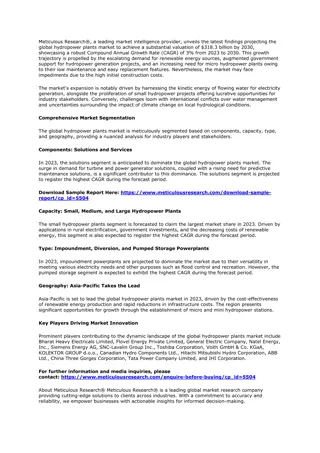
Site Selection Criteria in Building a Sustainable Radioactive Waste Repository Project
Explore the Brazilian experience in establishing a radioactive waste repository, aligning with Sustainable Development Goals. The site selection process, guided by CNEN standards, involves stages like Region of Interest, Preliminary Areas, Potential Areas, and Candidate Locations. Considerations include geological, hydrological, socio-economic, and ecological factors to ensure safe waste disposal and address public acceptance challenges. Advances in geospatial technology enhance data integration and analysis for improved site assessments.
Download Presentation

Please find below an Image/Link to download the presentation.
The content on the website is provided AS IS for your information and personal use only. It may not be sold, licensed, or shared on other websites without obtaining consent from the author. If you encounter any issues during the download, it is possible that the publisher has removed the file from their server.
You are allowed to download the files provided on this website for personal or commercial use, subject to the condition that they are used lawfully. All files are the property of their respective owners.
The content on the website is provided AS IS for your information and personal use only. It may not be sold, licensed, or shared on other websites without obtaining consent from the author.
E N D
Presentation Transcript
Site Selections role at a sustainable radioactive waste repository project: a Brazilian experience Rafael S.S.P. de Almeida Paulo C. H. Rodrigues Nuclear Technology Development Center CDTN/CNEN Belo Horizonte, Brazil
Introduction Brazil is establishing a radioactive waste repository to manage waste from nuclear plants and research reactors The site selection process follows guidelines outlined by the regulatory body CNEN and aligns with the United Nations' Sustainable Development Goals (SDGs) SDGs, such as clean water and sanitation (SDG 6), are crucial in considering the protection of the environment and human health. This review highlights how the Brazilian site selection process aligns with multiple SDGs
Site Selection Process LILW (Low and Intermediate-Level Waste) refers to radioactive waste that decays within 300 years or less It mainly consists of beta and gamma emitters, with minimal presence of alpha emitters CNEN (Brazilian regulatory body) established the CNEN Standard NE 6.06 in 1990 to ensure safe disposal of LILW The site selection process involves four stages: Region of Interest, Preliminary Areas, Potential Areas, and Candidate Locations Technical criteria are considered during each stage
Site Selection Process Stage Cartographic scale Criteria Region of Interest < 1:100.000 Bibliographic research; Survey of environmental protection areas and indigenous reserves; Demographic, water, physiographic, morphological, geotectonic, seismological, climatological, vegetation and mineral extraction studies. Preliminary Areas > 1:100.000 Geological, pedological, hydrographic, climatological and demographic studies; Assessment of access roads; Delimitation of the distance strips from the banks of rivers and water reservoirs, from the road network and around urban regions. Potential Areas Between 1:10.000 and 1:100.000 Planimetry detail for geology geophysical studies, geotechnical studies; Hydrological, hydrogeological and climatological studies; Socio- economic studies; Geological survey; Ecological studies; Ownership, occupation and destination of land. Candidate Locations >1:10.000 Planialtimetric survey; Radiometric survey; Pedological survey; Meteorological measurements; Opening of wells; Geotechnical/Drilling surveys; Geophysical surveys; Laboratory analysis; Survey of critical radiation exposure pathways; Geochemistry; Ecological studies; Detailing of hydrological and hydrogeological studies
Site Selection Process The NIMBY syndrome can arise in radioactive waste disposal facilities Public acceptance is crucial for project approval The text of CNEN NE 6.06, although progressive for its time, would require complementary procedures and approaches today Advancements in geospatial technology and analysis tools have made data integration and assessment easier Availability of software technology and georeferenced data ensures improved precision in site selection processes
Site Selection Process Criteria Measurable Parameters Access Ways Database of different types of road network Climatology Databases of the: Average Annual Rainfall and Climatological Classes Critical radiation exposure pathways Further information provided by field work Demography Urban Areas Database Environmental Protection Areas and Ecology Environmental Protected Areas Database Geomorphology Geomorphologic Units Hydrogeology Database of Hydrogeological Domains Indigenous Reservation/People Indigenous Reservation and Quilombola (Slave-descendant) Settlements Databases
SDGs at Site Selection Criteria UN SDGs Collection of 17 global objectives to address urgent challenges Emphasizes partnerships and collaboration for sustainable development Incorporating SDGs in site selection SDGs guide decision-making and promote sustainable practices in waste management Minimizes negative impacts, promotes sustainable development, ensures well-being of human and natural systems SDGs such as 2, 3, 6, 9, 11, 12, 14, and 15 relevant in site selection process
SDGs at Site Selection Criteria Brazilian site selection team integrates SDGs into measurable parameters Criteria Measurable Parameters SDG s Targets Access Ways Database of different types of road network 12.4 Climatology Databases of the: Average Annual Rainfall and Climatological Classes 12.4 Critical pathways radiation exposure Further information provided by field work 12.4 Demography Urban Areas Database 3.9, 12.4 Environmental Protection Areas and Ecology Environmental Database Protected Areas 2.4, 3.9, 6.6, 12.2, 12.4, 15.1, 15.2, 15.4, 15.5 Geomorphology Geomorphologic Units 12.4 Hydrogeology Database Domains of Hydrogeological 2.3, 2.4, 6.3, 6.6, 12.4, 14.1, 15.1 Indigenous Reservation/People Indigenous Quilombola (Slave-descendant) Settlements Databases Reservation and 2.3, 12.2, 12.4, 15.1, 15.2, 15.5
Conclusion The use of United Nations Sustainable Development Goals (SDGs) in the site selection process for a low and intermediate radioactive waste repository promotes sustainability and responsible decision-making By aligning with the SDGs, the selection process considers technical, environmental, social, economic, and cultural factors. Although not legally mandatory in Brazil, the national team prioritized the SDGs to ensure sustainability Geospatial analysis programs and georeferenced databases improve the selection process, making it more inclusive, transparent, and accountable This approach contributes to long-term sustainability, benefits for surrounding communities, and public acceptance Final site characterization actions will require complementary technical field studies in the future
Thank you! Rafael Almeida rafael.almeida@cdtn.be +55 31 3439-9524 www.gov.br/cdtn
















